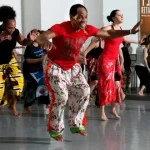The Elementary Schools in Japan for foreigners serve as a destination for international students who wish to study abroad in the Japanese school system, making Japan one of the best study abroad countries.
If you are living in Japan with school-age children or you intend to bring your children to Japan as international students, the issue of where to send your children is a large concern and is most times different from what foreign parents have experienced.
This article aims to broaden your knowledge of the elementary schools in Japan and the Japanese school system.
Are elementary schools free in Japan?
Some schools are tuition-free for public primary and secondary schools, even for foreign students. However, you will be required to cover some costs for;
- Lunches
- School materials
- Uniforms
- Contributions to the PTA.
Your school should provide a detailed list of everything that your student needs
List of the top elementary schools in Japan
- Aoba-Japan International School
- Ayla International School
- AXIS International Academy
- Chikuma Elementary school
- Chateau School
- Demachi Elementary school
- Kitakazumi Elementary school
- Nagano Elementary school
- Shinano Elementary school
- Shinonnoi Gakuen
Aoba-Japan International School
This is the first on our list of the top elementary schools in Japan for international students, and as the name implies, the Aoba-Japan International School is an international school located in Tokyo, Japan.
This school has campuses at;
- Nerima and
- Meguro.
Find out more about the school from their website below;
Ayla International School
Ayla International School (AIS) is a highly recognized international preschool and kindergarten school based in Tokyo, eastern Japan.
It is also one of the biligual elementary schools in Japan for foreigners, you can also check out some of the best japanese language schools near you.
AXIS International Academy
The AXIS International Academy is a public elementary school in Japan for students in kindergarten through 5th grade, located at 1-35-14 Kichijoji Hon-cho Musashino, Tokyo.
Chikuma Elementary school
One of the elementary schools in Japan for Foreigners is the CHIKUMA ELEMENTARY SCHOOL which is located at 2955, YAMAURA KOMORO, NAGANO, 384-0807.
To know more about this school, visit their official website below;
Chateau School
Chateau School is also one of the elementary schools in Japan for foreigners, established in 2011 and located in Azabu, Tokyo for students from ages three-months old to six-years.
Demachi Elementary school
Next on the list is the Demachi Elementary school located at 1-238, FUKAE TONAMI, TOYAMA, 939-1331.
Kitakazumi Elementary school
The Kitakazumi is one of the best elementary schools in Japan for foreigners located at 425, NAKATSUKA NAMERIKAWA, TOYAMA, 936-0875.
Nagano Elementary school
You can enroll your ward at the Nagano elementary school located at 16, KITAURA, ENDA, ZAO-MACHI KATTA-GUN, MIYAGI, 989-0821 Japan.
Shinano Elementary School
This is one of the very top elementary schools in Japan for foreigners located at 504-1, SHINANOCHO, TOTSUKA-KU YOKOHAMA, KANAGAWA, 244-0801 Japan.
Shinonnoi Gakuen
This is one of the educational institute in Japan that offers elementary classes to its students, the SHINONOI GAKUEN was established in 1960, interested persons can locate this school at NAGANO.
You can also visit the website below to get more details;
The Japanese Elementary School System
Elementary schools in japan operate on a trimester system, the first trimester extends from April to July, the second from September to December, and the third, January to March.
Student performance is evaluated every trimester based on criteria adopted by each school.
Evaluation methods differ from teacher to teacher, but many teachers evaluate their students comprehensively, based on quizzes given for each textbook unit and on daily conduct in class 6.
We shall also talk about certain topics like;
- Classrooms
- Teachers
- Subjects taught at the elementary schools in Japan
- Guidelines for the Course of Study
- Extracurricular Activities
- Elementary school events
- Entrance Ceremony
- School Excursions / Field Trip
Classrooms
In a classroom, there is usually a blackboard at the front and back, and rows of desks and chairs. The seating order is fixed and is usually changed on a regular basis.
Though the setup varies from class to class, the classroom has a bulletin board for posting announcements and displaying students’ work, lockers for storing their bags and other items, and cleaning equipment.
It is equipped with speakers for the school’s broadcasting system, and some classrooms also have heaters and air conditioners, a television, as well as video equipment.
Teachers
Elementary schools use the kurasu tan’nin-sei system, in which one teacher—the homeroom teacher—provides instruction in almost every subject to the class assigned.
However, in the third through sixth grades, it is common for other teachers to teach specialized classes in such subjects as music or art.
One can qualify to become a public school teacher by taking a specified number of credits in education courses at a four-year university or a two-year junior college to obtain a teaching certificate and then bypassing the Kyoin Saiyo Shiken (Teacher Service Examination).
Teachers are assigned to schools by the chairperson of the board of education in each municipality, and they are transferred approximately every three to five years, rarely remaining at the same school for many years.
The teachers’ working hours vary from community to community, but usually, begin around 8 a.m. and end around 5 p.m. Teachers sometimes have to work overtime around the end of a trimester or before and after a school event.
Subjects taught in elementary schools
Here are some of the subjects to be taught in elementary schools in Japan for foreigners as stipulated in the School Education Law.
- Social Studies (Shakai – 社会)
- Living Environment Studies (Seikatsu – 生活)
- Music (Ongaku – 音楽)
- Home Economics (Katei – 家庭)
- Health and Physical Education (Taiku / Hoken-Taiku – 体育 / 保健体育)
- Sexuality Education
- Ethics / Moral Education (Doutoku – 道徳)
- Foreign Language Activities (Gaikokugo katsudo – 外国語活動)
Social Studies (Shakai – 社会)
Social studies is a popular subject taught in elementary schools in Japan, the classes begin from the 3rd grade. In most cases, classes are conducted using textbooks and worksheets and cover both geography and history, which are the major pillars of social studies.
The reason for this class is to acquire a basic knowledge of geography and history. In addition, students deepen their understanding of Japan’s regional characteristics, traditions, culture, and religion, including the origins and regional composition of Japan and the world.
Living Environment Studies (Seikatsu – 生活)
Elementary schools in Japan through specific activities and experiences teach students to become interested in the relationship between themselves and people close to them; society, and nature.
They think about themselves and their lives and acquire the habits and skills necessary for living their lives in the process.
This lets them cultivate the foundation for independence in accordance with the Japanese school system.
Music (Ongaku – 音楽)
Students learn about singing, playing musical instruments such as a recorder, a keyboard harmonica, reading music notes, etc, at tender ages in elementary schools in Japan.
You may also be interested in reading, enrolling in a Japanese public school, and materials you need to prepare.
Home Economics (Katei – 家庭)
Many elementary schools in Japan for foreigners teach home economics which gives students basic skills necessary for independent living.
This is mainly done through practical and experiential learning activities related to;
- Clothing
- Food
- Housing
The goal is for students to deepen their understanding of the functions of the home and give them the skills to enjoy their future lives.
Health and Physical Education (Taiku / Hoken-Taiku – 体育 / 保健体育)
Nowadays, the lack of physical strength in children is becoming a social problem, physical education in elementary schools in Japan is also based on improving the student’s f
Throughout each grade, swimming in the pool, games using balls, and dances that refer to expressive movements will be introduced according to the grade.
Sexuality Education
According to the Elementary schools in Japan, Students starting from the 4th grade, both boys and girls will learn about growth and development.
Elementary schools in Japan understand that pupils should learn about individual differences in height and weight gain, changes in physical constitution, menstruation, and the function of hormones.
From the 5th grade onwards, they will learn to develop their mind and body in the same way as their body and approach adults. In the sixth grade, they will also learn the correct knowledge about diseases such as HIV.
Ethics / Moral Education (Doutoku – 道徳)
This is mainly related to relationships with other people, nature, relationships with sublime things, to relationships with groups and society.
Elementary schools in Japan for foreigners aid students to cultivate morality as moral sentiment, judgment, motivation, and attitude.
Foreign Language Activities (Gaikokugo katsudo – 外国語活動)
Foreign exchange programs in Japan aid experiential understanding of language and culture, fostering an attitude of actively trying to communicate, and cultivating the foundation of communication skills while familiarizing with foreign language voices and basic expressions.
Students in elementary schools in Japan from 5th and 6th grades are taught to be able to communicate actively in a foreign language (English).
The goal is;
- To experience the joy of communicating in a foreign language
- To listen actively to foreign languages
- To know the importance of communicating using language
- To familiarize themselves with other students in Elementary schools in Japan through adventures.
Some schools have foreign language lessons (English) for grades 1 – 4 as integrated studies.
Guidelines for the Course of Study
The Guidelines for the Course of Study set the standards for school curriculums prescribed by the Ministry of Education, Culture, Sports, Science, and Technology.
Each school is required to teach its students in accordance with the Guidelines and separate guidelines are stipulated for each stage of education from kindergarten through elementary, junior high, and senior high school.
The Guidelines also delineate the number of units to be covered for each area within each subject and how they are acquired.
Extracurricular Activities
In elementary schools in Japan, Grades four and above participate in club activities during school hours as part of tokubetsu katsudo (special activities).
There are comic illustration, model craft, computer, badminton, table tennis, basketball, cooking/sewing, games, softball, science, and dance clubs as well as many others, which meet about once a month.
Aside from these activities, there are also elementary schools in Japan for foreigners that hold activities in participation with the community or region.
Elementary school events
Elementary schools in Japan have numerous events throughout the year. The following list is the example of the events held at an elementary school:
April: Opening Ceremony, Entrance Ceremony
May: Anniversary of the Founding of the School (school holiday), Field Trip (5th grade)
June: Field Day, Ward-sponsored Joint Music Appreciation Concert, Field Trip (6th grade)
July: Visitors’ Day and PTA Meeting, Closing Ceremony, Summer Vacation begins
August: Summer Vacation ends
September: Opening Ceremony, School Visit
October: Joint Field Day
November: Performing Arts Show, Joint Concert
December: Individual Conferences, Closing Ceremony
January: Opening Ceremony, In-School Kakizome Calligraphy Exhibit
February: Graduation Trip (6th grade)
March: 6th Grade Farewell Party, Closing Ceremony, Graduation
Entrance Ceremony
The entrance ceremony is held in April at the beginning of the new school year.
Newly enrolled students gather with their parents, teachers, and others, and a representative of the current student body, the school principal, and guests of honor welcome them with speeches.
School Excursions / Field Trip
School excursions in elementary schools in Japan are usually held in the spring or fall. Generally, a whole grade will be taken en masse on an all-day trip to a museum or to the countryside.
Frequently Asked Questions
Can foreign kids go to school in Japan?
Yes they can, as an international student or a foreigner in Japan, you have the same rights to attend free public schools just like native Japanese students. The only fees required will be those for uniforms and required school materials.
Can foreigners go to public school in Japan?
Students enrolled in the Japanese elementary and junior high schools either as international or native students can receive public education for free if they wish.
Is elementary school free in Japan?
Some public elementary schools in Japan are tuition-free for both foreign and native students, however, parents or guardians' main expenses are uniforms, supplementary materials, lunch fees, and charges for school trips.
CONCLUSION
This brings an end to the post on Elementary Schools in Japan for Foreigners, If you found this article useful then kindly share this post.
Also, send in your suggestions if you think this post requires an update, finally, there are many elementary schools in Japan, you apply to as many schools as possible and ensure to send in your applications early.
















